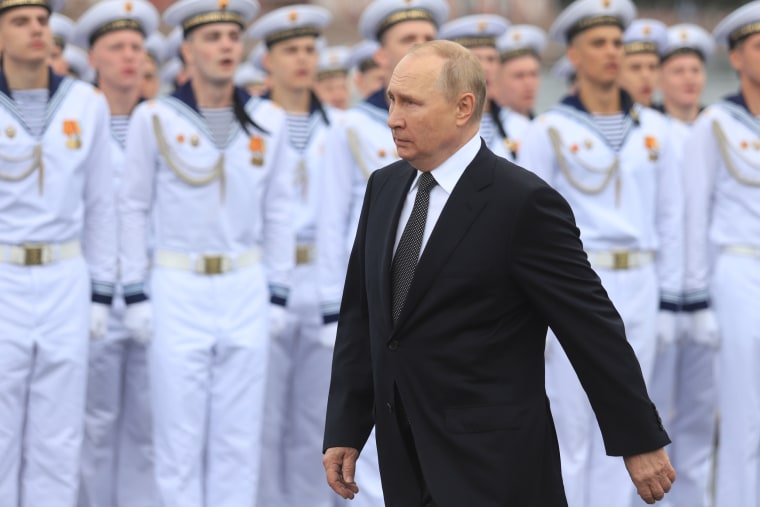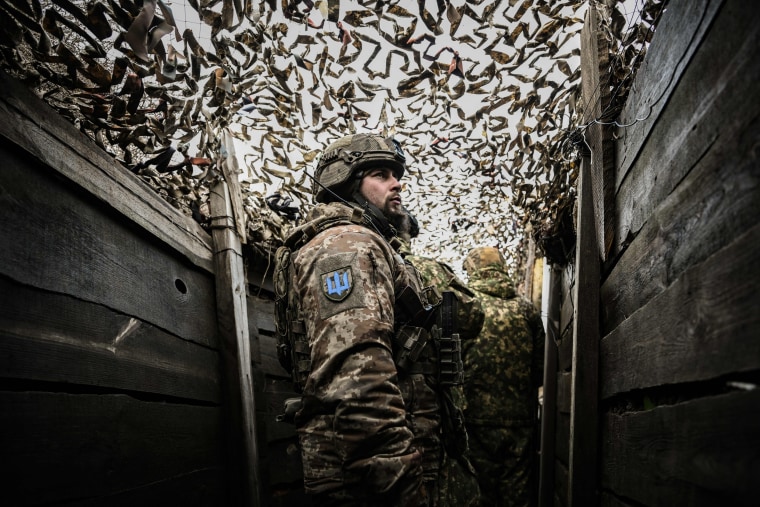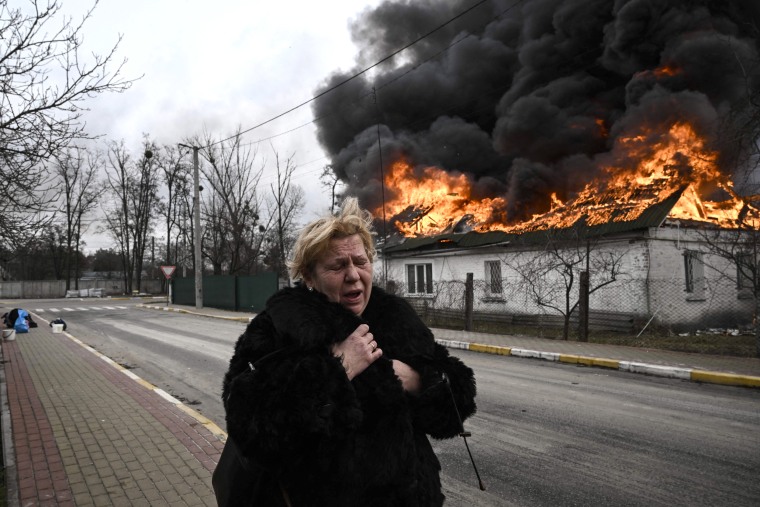Only a few months after the 2003 invasion of Iraq, Gen. David Petraeus asked a journalist, “Tell me how this ends.” As the war between Russia and Ukraine passes its sixth month, this question feels timely once again. On Monday, Russia’s FSB security agency claimed that Ukraine’s secret services had orchestrated a shocking car bomb that killed the daughter of a close Putin ally, war booster and Russian ultranationalist over the weekend. This claim, made without evidence, could well be a ploy for Russian escalation.
While our crystal ball may be cloudy, the number of possible outcomes seem to be narrowing.
Clearly, the situation is changing, which makes any definitive answer to this query impossible. But while our crystal ball may be cloudy, the number of possible outcomes seem to be narrowing.
Importantly, war is a “means,” not an “end.” And this war was misunderstood before it even started. Many experts argued that Moscow would never go through with an invasion. Others believed the Kremlin would quickly occupy much of the country, based on Russia’s overwhelming military superiority. The strength and resilience of the Ukrainian resistance was grossly underestimated. The abilities of the Russian military were terribly overestimated.
That poor read of military capability has defined the war thus far. The determination of Ukraine and its Western allies will define it in the future. The West is confronted with another “long twilight struggle,” as President John F. Kennedy called it, that will continue even after this conflict ends. Time remains a significant resource on both sides, as Moscow works to hold its population’s support together and undermine democratic values.
Russian President Vladimir Putin certainly believes he is winning. He is convinced that the willpower and determination of an autocrat is superior to the patience and focus of democracies.

But what has so far helped Ukraine and the West are Putin’s two enormous strategic miscalculations. He clearly believed Russia could achieve a quick victory, and also thought the West would remain divided and unable to mount a cohesive response.
Ukraine pushed the Russians back from the gates of the capital, Kyiv, and they successfully defended their second-largest city, Kharkiv. Their defiant 82-day defense of Mariupol served not only as a rallying point for Ukrainian resistance but as a focal point for Russian military incompetence. It slowed the Russian westward advance, forced the Kremlin to expend substantial amounts of men and materiel, and demonstrated that Putin’s description of the invasion as a “special military technical operation” was patently false.
In terms of Western resolve, Putin may have ironically done more for NATO unity than anyone since the end of the Cold War. NATO increased its forces and many member states announced significant increases in their defense budgets. At its recent summit, NATO leaders condemned Moscow, reaffirmed their support for Ukraine, and welcomed Sweden and Finland as new members. The alliance appears strong.
But the human and material costs to Ukraine and Russia have been enormous. Russian forces still have a significant advantage in manpower, weapons and ammunition, but there is evidence they are running out of precision-guided weapons and modern equipment. Furthermore, the Defense Department estimates Moscow has suffered over 70,000 casualties so far. That means nearly one half of the Russian force that attacked Ukraine on Feb. 24 are either dead, wounded, captured or missing. Britain’s top intelligence officer, Richard Moore, the head of MI6, said in July it appeared Russia’s military was “about to run out of steam.”
Its shortage of willing and competent soldiers is now a major challenge for the Kremlin. Putin has called for more volunteers, yet he has made no announcements about mass mobilization and expanded conscription, nor has he officially declared war or warned his citizens to prepare for more sacrifice.
Ukraine’s major military challenge is a shortage of weapons. Western military equipment has been essential to Kyiv’s slowing the Russian advance, and the delivery of American High Mobility Artillery Rocket System (HIMARS) has had a significant impact. Still, Ukrainian leaders have repeatedly complained that more Western military aid is essential if they are to evict Russian forces from their territory.
It’s possible Putin hopes to formally annex those portions of Ukraine under Russian control, at least according to U.S. intelligence reports. This includes a sizable portion of the Donbas region and the southern coast. But as the pace slows, both sides have become mired in an artillery slugfest fighting for incremental territorial gains in the Donbas region, as Ukraine appears poised for a counteroffensive in the south. Kyiv has also conducted a series of high profile special operations attacks on Russian air bases and supply line
The war could certainly continue to drag along for many months, with neither side able to achieve decisive victory. It is important to acknowledge that fighting in the eastern portion of Ukraine began in 2014 following the first Russian invasion. Over the intervening eight years, over 14,000 Ukrainians were killed and fighting continued intermittently until the invasion on Feb. 24.
Putin might consider escalation should a similar a stalemate occur. This could mean “horizontal escalation,” including cyberattacks or efforts to foment a crisis somewhere else. (Recent Russian threats against Lithuania and Estonia might be an example.) It could also mean “vertical escalation,” including threats to use nuclear weapons against Ukraine or the West. The number of explicit nuclear threats against the U.S. and its European allies has reached nearly three dozen. Such threats have prevented the West from direct military intervention, but they have failed to fully intimidate or deter either Kyiv or the West.
Ultimately, victory for Putin must combine success on the battlefield with political aspiration. Some commentators believe if Russia can secure the Donbas, Putin could declare a cease-fire and seek negotiations. President Emmanuel Macron of France and Henry Kissinger have urged negotiations. Ukraine should prepare to cede land for peace, according to this view.
But it is a short-sighted perspective. Putin’s territorial desires in the Donbas region, while important, are the least of his ambitions. Ukrainian President Volodymyr Zelenskyy correctly argued that a cease-fire while Russia occupies Ukrainian territory would actually prolong the war and provide Putin with more time to plan a new attack. His goal to subjugate Ukraine remains. Moscow continues to “Russify” the areas it controls by introducing the ruble as local currency, appointing new political leaders, improving its ability to defend occupied territories, and declaring occupied Ukrainian territory as part of Russia.

Other Russian officials, meanwhile, seem to confirm Putin’s desire to destroy Ukrainian sovereignty. Nikolai Patrushev, secretary of the Russian Security Council, described the goals of the invasion as the end of the Kiev government and of Ukrainian neutrality. Former Russian President Dmitry Medvedev wondered if Ukraine would even “exist” in two years. While Putin might accept an interim solution, he seeks — at a minimum — a new security architecture in Europe and in a broader sense a new world order.
President Joe Biden and his administration must prepare both the American people and our NATO allies for dueling possibilities. The war may become a true slog; it may also end abruptly and messily. Across Europe, there is now widespread concern that Russia may reduce the export of natural gas needed to heat homes for the upcoming winter. Putin may also feel emboldened by a series of shake-ups among Western governments, and because Americans seem increasingly distracted and less interested in the war.
Consequently, Biden must both at home and abroad “transform short-term unity borne of reactive shock into enduring cohesion, borne of affirmative purpose,” Ali Wyne, a senior analyst at the Eurasia Group, told The New York Times. Biden must also provide the critical leadership that will ensure that NATO keeps its promise of “unwavering support for Ukraine’s independence, sovereignty and territorial integrity,” as Secretary of State Antony Blinken put it more than a month before the invasion.
In his inaugural address in January 1961, Kennedy observed, “Now the trumpet summons us again — not as a call to bear arms, though arms we need — not as a call to battle, though embattled we are — but a call to bear the burden of a long twilight struggle, year in and year out, rejoicing in hope, patient in tribulation.” For Putin and his view of the future to fail, these words must resonate once again.
The drama surrounding the car bombing over the weekend, coupled with fears that Russia could be planning an imminent attack at the Zaporizhzhia nuclear power plant, highlight the global stakes of this unpredictable conflict. We may not know exactly how the war ends, but we know enough to understand why the fate of the West and Ukraine remain inextricably, dangerously intertwined.
